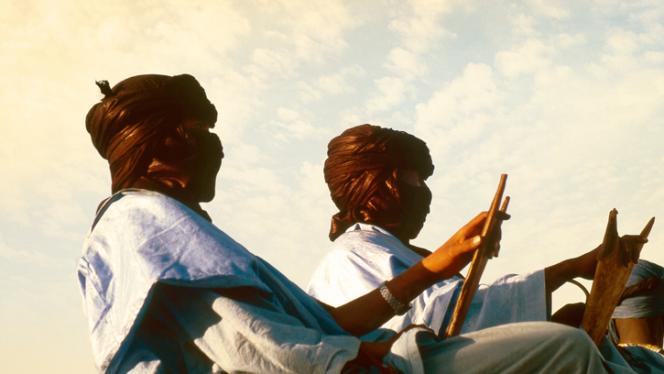Thursday 21 November 2024
The sartorial politics of the kadamul in Sudan

The kadamul, a Sahelian cloth that covers the head and face, is closely associated in Sudan with Arab militiamen and the RSF. However, it is also a shared part of the culture of desert tribes, many of which oppose the RSF.
The kadamul, a large, colourful turban worn by supporters of the Sudanese Armed Forces from armed movements originating in the Darfur region (western Sudan), has sparked some confusion. It closely resembles the headwear worn by Mohamed Hamdan Dagalo’s (Hemedti) forces, covering the entire neck and much of the face. In Sudan, this traditional headwear (crafted from metres of specialised fabric) has recently become associated with rebels. Wearing the kadamul now symbolises allegiance to the Janjaweed militias fighting the army. Some supporters of the armed forces even accuse politicians who defend rebel crimes, rhetorically asking: “Why don’t you wear the kadamul?”—implying they are not being honest about their political commitments in Sudan’s war.
The association between the kadamul and the RSF was a prominent feature in a recent report by Human Rights Watch on the atrocities committed by Hemedti’s forces against the Masalit in Darfur. The term appeared three times, each time identifying RSF fighters. Alex de Waal also spoke of a “Republic of Kamadol,” describing Hemedti’s Timurian attempt to gather the “disaffected lumpenmilitariat” of Arab-identifying militiamen across the Sahel in a brutal and audacious bid to take over Sudan using “wild power”.
This association has led to a dilemma for many, as some believe that fighters supporting the Sudanese army should avoid dressing like rebels, especially since the kadamul has become a symbol of rebellion. However, another perspective, proudly held by fighters who wear the kadamul, argues that they should not surrender this traditional attire to be exclusively associated with the Janjaweed, who now represent the greatest threat to Sudan’s people.
This association has led to a dilemma for many, as some believe that fighters supporting the Sudanese army should avoid dressing like rebels, especially since the kadamul has become a symbol of rebellion.
Supporters of the joint armed forces, mainly from the Zaghawa tribe, which shares territory with the Janjaweed tribes, have fought long and brutal wars with these groups since the early 2000s. Those from these movements believe that wearing the kadamul could help reshape public perception of the attire, emphasising that it is part of the shared culture of desert tribes, not something inherently connected to the brutal crimes—such as rape and looting—committed by rogue militias wearing the accessory. Their hope is that through images of brave fighters in the kadamul standing side by side with regular armed forces, the Sudanese public’s hostility toward the attire will lessen.
The Janjaweed leaders, known for blending military uniforms with the traditional kadamul, have manipulated this imagery to bolster their false narrative of representing marginalised Darfuris. They’ve framed their fight as one for the rights stolen from them by the central and northern elites, who monopolise the nation’s power and wealth. This rhetoric initially seemed convincing and garnered some sympathy. However, Hemedti’s forces soon undermined this narrative themselves when they turned against the very tribes they claimed to protect, including those in Darfur, which had briefly enjoyed relative peace before the Janjaweed reignited terrifying massacres and atrocities akin to genocide.
These abhorrent actions, fuelled by blind racism, equate Hemedti’s militia with terrorist groups that claim to uphold Islam while disproportionately victimising Muslims. In Sudan, the very marginalised communities—allegedly the beneficiaries of the Janjaweed’s struggle—have become their primary victims. The Janjaweed have exploited the war to revive their old mission of eliminating non-Arab tribes by forcing them to choose between death and displacement.
Many groups in Darfur, including the Zaghawa, whose armed factions play a crucial role in supporting the army and preventing militia advances, refuse to allow the kadamul to remain a symbol exclusive to the Janjaweed. Similarly, they reject the notion that the entire local heritage—including dialects, proverbs, and ways of life—should be tainted simply because the Janjaweed have adopted it. Conversely, the Janjaweed’s attachment to the kadamul is puzzling. Before the war, Hemedti himself criticised the kadamul as unsuitable for formal forces stationed in urban areas, though useful in the desert.
Many groups in Darfur, including the Zaghawa, whose armed factions play a crucial role in supporting the army and preventing militia advances, refuse to allow the kadamul to remain a symbol exclusive to the Janjaweed.
This persistence recalls the Tuareg people’s loyalty to their shawl, which resembles Sudan’s kadamul. After the war broke out, the Janjaweed, perceiving themselves as combatants against the “old Sudan” (or “Sudan of 1956”), sought to create a distinct identity. Their widespread adoption of the kadamul was partly an act of defiance against the traditional Sudanese attire of the jalabiya and turban, which have long stood as symbols of national unity.
The term Tuareg encompasses various meanings and can refer to the Arab and Berber tribes inhabiting the African Sahara, spanning from Sudan to west Africa in an area known as the Sahel. These tribes, often referred to as “Arabs of the diaspora,” share a strong visual and cultural resemblance, characterised by intense loyalty and a common use of violence to achieve their aspiration of establishing a homeland. Living as minorities in countries like Niger and Mali, this drive explains the solidarity many Sahelian fighters feel with Hemedti’s cause and why thousands of fighters from various countries have joined his ranks, hoping to realise their kin’s ambitions in Sudan. It also illuminates why it is difficult to distinguish between local Janjaweed and foreign mercenaries, as they share similar features, dialects, and attire.
Translated from Al Araby Al-Jadeed.






